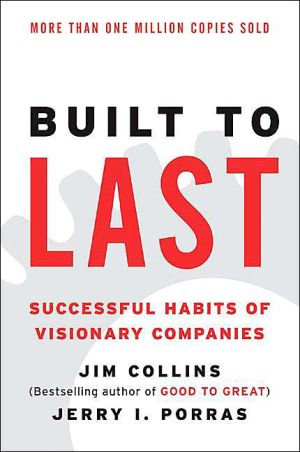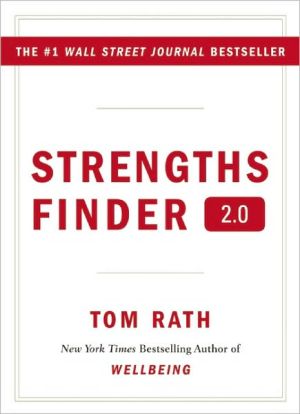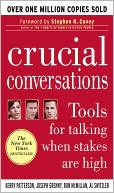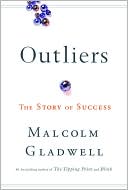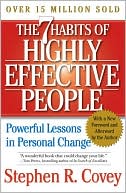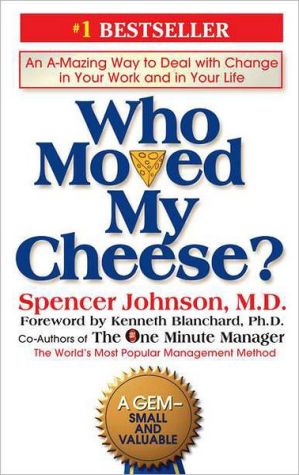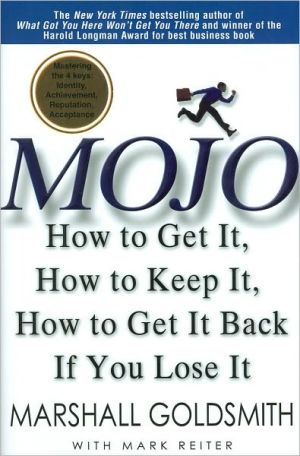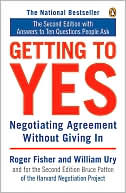Built to Last: Successful Habits of Visionary Companies
"This is not a book about charismatic visionary leaders. It is not about visionary product concepts or visionary products or visionary market insights. Nor even is it about just having a corporate vision. This is a book about something far more important, enduring, and substantial. This is a book about visionary companies." So write James C. Collins and Jerry I. Porras in this groundbreaking book that shatters myths, provides new insights, and gives practical guidance to those who would like...
Search in google:
"Good to Great is about turning good results into great results; Built to Last is about turning great results into an enduring great company." so write Jim Collins and Jerry Porras in this groundbreaking book that shatters myths, provides new insights, and gives practical guidance to those who would like to build landmark companies that stand the test of time.Drawing upon a six-year research project at the Stanford University Graduate School of Business, Collins and Porras took eighteen truly exceptional and long-lasting companies and studied each company in direct comparison to one of its top competitors. They examined the companies from their very beginnings to the present day, as start-ups, as midsize companies, and as large companies. Throughout, the authors asked: "What makes the truly exceptional companies different from other companies?"Collins and Porras go beyond the incessant barrage of management buzzwords and fads of the day to discover timeless qualities that have consistently distinguished outstanding companies. They also provide inspiration to all executives and entrepreneurs by destroying the false but widely accepted idea that only charismatic visionary leaders can build visionary companies.Filled with hundreds of specific examples and organized into a coherent framework of practical concepts that can be applied by managers and entrepreneurs at all levels, Built to Last provides a master blueprint for building organizations that will prosper long into the twenty-first century and beyond. USA Today - Kevin Maney Built to Last...is one of the most eye-opening business studies since In Search of Excellence.
Chapter One\ This is not a book about charismatic visionary leaders. It is not about visionary product concepts or visionary market insights. Nor even is it about just having a corporate vision.\ This is a book about something far more important, enduring, and substantial. This is a book about visionary companies.\ What is a visionary company? Visionary companies are premier institutions-the crown jewels - in their industries, widely admired by their peers and having a long track record of making a significant impact on the world around them. The key point is that a visionary company is an organization - an institution. All individual leaders, no matter how charismatic or visionary, eventually die; and all visionary products and services-all "great ideas" - eventually become obsolete. Indeed, entire markets can become obsolete and disappear. Yet visionary companies prosper over long periods of time, through multiple product life cycles and multiple generations of active leaders.\ Pause for a moment and compose your own mental list of visionary companies; try to think of five to ten organizations that meet the following criteria:\ \ Premier institution in its industry\ Widely admired by knowledgeable businesspeople\ Made an indelible imprint on the world in which we live\ Had multiple generations of chief executives\ Been through multiple product (or service) life cycles\ Founded before 1950\ \ Examine your list of companies. What about them particularly impresses you? Notice any common themes? What might explain their enduring quality and prosperity. How might they be different from other companiesthat had the same opportunities in life, but didn't attain the same stature?\ In a six-year research project, we set out to identify and systematically research the historical development of a set of visionary companies, to examine how they differed from a carefully selected control set of comparison companies, and to thereby discover the underlying factors that account for their extraordinary long-term position. This book presents the findings of our research project and their practical implications.\ We wish to be clear right up front: The "comparison companies" in our study are not dog companies, nor are they entirely unvisionary. Indeed, they are good companies, having survived in most cases as long as the visionary companies and, as you'll see, having outperformed the general stock market. But they don't quite match up to the overall stature of the visionary com- panies in our study. In most cases, you can think of the visionary company as the gold medalist and the comparison company as the silver or bronze medalist. We chose the term "visionary" companies, rather than just "successful" or "enduring" companies, to reflect the fact that they have distinguished themselves as a very special and elite breed of institutions. They are morethan successful. They are more than enduring. In most cases, they are the best of the best in thdir industries, and have been that way for decades. Many of them have served as role models -icons, really - for the practice of management around the world. (Table 1. 1 shows the companies in our study. We wish to be clear that the companies in our study are not the only visionary companies in existence. We will explain in a few pages how we came up with these particular companies.)\ Yet as extraordinary as they are, the visionary companies do not have perfect, unblemished records. (Examine your own list of visionary companies. We suspect that most if not all of them have taken a serious tumble at least once during their history, probably multiple times.) Walt Disney faced a serious cash flow crisis in 1939 which forced it to go public; later, in the early 1980s, the company nearly ceased to exist as an independent entity as corporate raiders eyed its depressed stock price. Boeing had serious diffi-culties in the,mid-1930s, the late 1940s, and again in the early 1970s when it laid off over sixty thousand employees. 3M began life as a failed mine and almost went out of business in the early 1900s. Hewlett-Packard faced severe cutbacks in 1945; in 1990, it watched its stock drop to a price below book value. Sony had repeated product failures during its first five years of life (1945-1950), and in the 1970s saw its Beta format lose to VHS in the battle for market dominance in VCRs. Ford posted one of the largest annual losses in American business history ($3.3 billion in three years) in the early 1980s before it began an impressive turnaround and long-needed revitalization. Citicorp (founded in 1812, the same year Napoleon marched to Moscow) languished in the late 1800s, during the 1930s Depression, and again in the late 1980s when it struggled with its global loan portfolio. IBM was nearly bankrupt in 1914, then again in 1921, and is having trouble again in the early 1990s.\ The companies in our Research Study\ \ Table 1.1\ \ \ Visionary Company\ 3M\ American Express\ Boeing\ Citicorp\ Ford\ General Electric\ Hewlett-Packard\ IBM\ Johnson & Johnson\ Marriott\ Merck\ Motorola\ Nordstrom\ Philip Morris\ Procter & Gamble\ Sony\ Wal-Mart\ Walt Disney\ \ \ Comparision Company\ Norton\ Wells Fargo\ McDonnell Douglas\ Chase Manhattan\ GM\ Westinghouse\ Texas Instruments\ Burroughs\ Bristol-Myers Squibb\ Howard Johnson\ Pfizer\ Zenith\ Melville\ RJR Nabisco\ Colgate\ Kenwood\ Ames\ Columbia\ \ \ \ \ \ \ \ \ Built to Last. Copyright © by James C. Collins. Reprinted by permission of HarperCollins Publishers, Inc. All rights reserved. Available now wherever books are sold.
Ch. 1The best of the best1Ch. 2Clock building, not time telling22Interlude : no "tyranny of the OR"43Ch. 3More than profits46Ch. 4Preserve the core / stimulate progress80Ch. 5Big hairy audacious goals91Ch. 6Cult-like cultures115Ch. 7Try a lot of stuff and keep what works140Ch. 8Home-grown management169Ch. 9Good enough never is185Ch. 10The end of the beginning201Ch. 11Building the vision219Epilogue : frequently asked questions241AppFounding roots of visionary companies and comparison companies256
\ From Barnes & NobleThe Barnes & Noble Review\ Jim Collins and Jerry Porras begin their groundbreaking analysis of "visionary companies" with the following bold statement: "We believe every CEO, manager, and entrepreneur should read this book." Although their language may sound slightly hubristic, the authors actually deliver the promised goods: Written in eloquent and accessible language, Built to Last, the result of an extensive six-year research study conducted at Stanford University, is a classic business book that surely deserves the accolades critics, readers, and its creators have heaped upon it. \ Collins and Porras begin by defining the type of organizations they intend to examine. American Express, Ford, GE, Nordstrom, and Walt Disney are some of the 18 visionary companies -- widely admired, crown-jewel institutions that were founded before 1950 and have left "an indelible imprint on the world in which we live" -- to fall into the purview of their study. The authors then proceed to offer 12 management myths shattered by their research into these companies. Perhaps the most significant of these debunked pieces of conventional wisdom is the idea that change is the sole constant in the business world. Instead, Collins and Porras argue, "a visionary company almost religiously preserves its core ideology -- changing it seldom, if ever." From this adherence to a fundamental set of beliefs or a deeply held sense of self-identity comes the discipline and drive that enables a company to succeed in rapidly changing, volatile environments.\ One of the enjoyable things about reading Built to Last is that its authors consciously chose to avoid the trendy phrases that sometimes make business books seem no more weighty or enduring than magazine articles. Instead, Collins and Porras have written a book that is meaningful, passionate, based on careful study, and, in its own way, built to last. (Sunil Sharma)\ \ \ \ \ \ Kevin ManeyBuilt to Last...is one of the most eye-opening business studies since In Search of Excellence. \ —USA Today\ \ \ T.J. RodgersA 'must read' for any CEO who aspires to create a great company.\ \ \ \ \ Library JournalWhat makes a visionary company? This book, written by a team from Stanford's Graduate School of Business, compares what the authors have identified as "visionary" companies with selected companies in the same industry. \ The authors juxtapose Disney and Columbia Pictures, Ford and General Motors, Motorola and Zenith, and Hewlett-Packard and Texas Instruments, to name a few. The visionary companies, the authors found out, had a number of common characteristics; for instance, almost all had some type of core ideology that guided the company in times of upheaval and served as a constant bench mark. Not all the visionary companies were founded by visionary leaders, however.\ On the whole, this is an intriguing book that occasionally provides rare and interesting glimpses into the inner workings and philosophical foundations of successful businesses. Recommended for all libraries.\ -- Randy L. Abbott, University of Evansville Library, Indiana\ \ \
